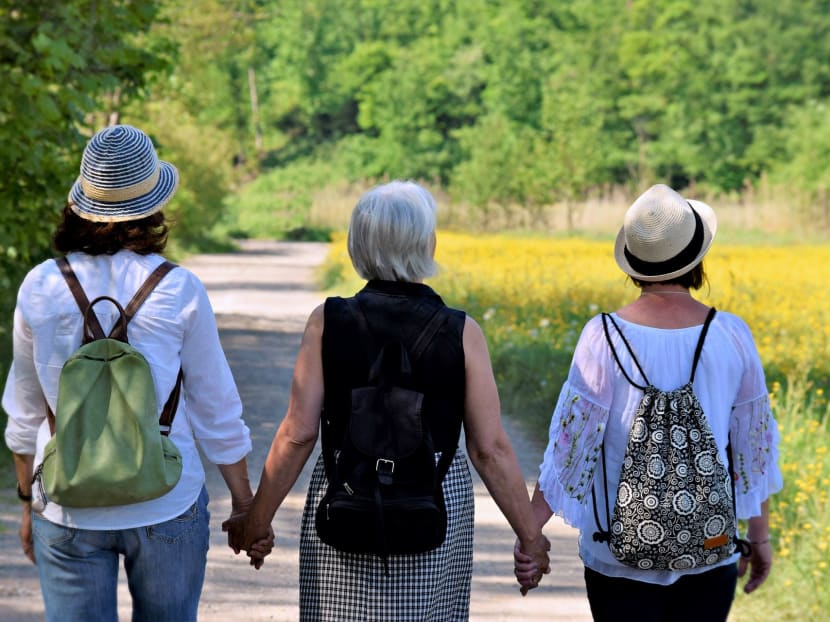Most middle-aged women sexually active but 7 in 10 have sexual dysfunction: NUHS study
SINGAPORE — More than half of the middle-aged women in Singapore are sexually active, though a high proportion among them experience sexual dysfunction, a large-scale study here showed.

Researchers for a study done by the National University Health System said the results provide useful insights on female sexual activity and sexual dysfunction because there is limited research on this topic among different ethnic groups of middle-aged women in Singapore.
- A study was done by NUHS to examine sexual activity and sexual dysfunction among middle-aged women
- It found that 57 per cent of participants were sexually active and of these, 70 per cent experienced sexual dysfunction
- It is the largest multi-ethnic study on sexual activity for women in this age group in Singapore
- Researchers said female sexual function in Asia is under-reported, under-treated and under-studied
- Medical intervention would be important to help women cope with the changes
SINGAPORE — More than half of the middle-aged women in Singapore are sexually active, though a high proportion among them experience sexual dysfunction, a large-scale study here showed.
The questionnaire study led by the National University Health System (NUHS) involved 1,048 Chinese, Malay and Indian women aged 45 to 69 and is the largest multi-ethnic study on sexual activity for women in this age group here to date.
In a press release on Tuesday (Nov 30), NUHS explained that the objective was to examine sexual inactivity and female sexual dysfunction in women who are in their midlife, which is an important aspect to their mental and marital health.
The aim was also to provide more healthcare support to middle-aged women when they experience changes in their sexual functions.
“Due to embarrassment, religious sensitivities and Eastern values, female sexual issues are under-reported, under-treated and under-studied in Asia and it is rarely raised by midlife Asian women during medical care,” it added.
The study, done from September 2014 to October 2016, found that 57 per cent of its participants were sexually active, especially among married women. Of these sexually active lot, 70 per cent experienced sexual dysfunction.
Dr Susan Logan, from the department of obstetrics and gynaecology at the National University Hospital (NUH) who co-led the study, said: “The results provide useful insights on female sexual activity and sexual dysfunction as there is limited research on this topic among different ethnic groups of midlife women in Singapore.
“As studies suggest that few women will seek help with sexual issues, it is imperative that health care professionals start the discussion with those who are affected.”
The mean age of the participants who completed NUHS’ Female Sexual Function Index questionnaire was 56 and most were postmenopausal.
The mean menopausal age for the participants was 49.7.
Most of the participants were married and had children.
The majority also had either secondary or university education. One in four had a lower-income background.
In terms of comorbidities, or having more than one medical condition, the women commonly had diabetes and hypertension.
Very few of them were on menopausal hormone therapy or taking antidepressants.
Very few were smokers or drinking alcohol and just over half did not meet the recommended duration for moderate physical activity.
KEY FINDINGS
From the study, researchers found some correlations that were considered “novel”.
For example, there was a link between sexual inactivity and women who were underweight.
There was also a link between female sexual dysfunction and women who had weaker hand-grip strength.
Another was that women of Malay ethnicity had less sexual dysfunction.
The study looked at the women’s sexual activities in the four weeks before they answered the questionnaire and examined aspects such as desire, arousal, lubrication, orgasm, satisfaction and pain from vaginal penetration.
Participants could choose from a score of between zero and six or from one to six — with higher scores indicating better function.
The study found that both sexual inactivity and dysfunction increased with age, with desire being the most affected.
Factors associated with sexual inactivity included:
- Being of an older age
- Having low education
- Not being married
- Having a low Body Mass Index (BMI)
At a briefing to present the study’s findings, Dr Logan said that being underweight was associated with poor self-rated health and quality of life, both of which affect sexual function.
The senior consultant from the division of reproductive endocrinology and infertility at NUH said that women with lower BMI will have less naturally produced estrogen.
Estrogen is one of the main sex hormones that women produce more of than men. It helps to regulate the reproductive system and has a role to play in maintaining sexual health, among other functions.
The study found that female sexual dysfunction were associated with:
- Women who had been in menopause for more than 10 years
- Women who had never borne children
- Women who had moderate or severe vaginal dryness
- Women who had poor hand-grip strength
Dr Logan said that hand-grip strength is a measurement of upper body strength and if scores were low, they were associated with a wide range of medical conditions.
“So it's a proxy of, I suppose, declining health. It was very interesting. For the first time, it was found to be associated with female sexual dysfunction,” she added.
“A huge finding was moderate or severe vaginal dryness. So if women have this, they were 14 times more likely to have female sexual dysfunction… So (that is) a huge, huge association,” Dr Logan said.
Professor Yong Eu Leong, emeritus consultant from the department of obstetrics and gynaecology at NUH, said: “Vaginal dryness is the biggest risk factor of female sexual dysfunction, which increases the risk by a whopping 13.8-fold (or) about 1,300 per cent.
“Most risk factors in other epidemiological studies do not reach three-fold. This is almost like the risk of lung cancer from cigarette smoking, which can be 15 to 30 times.”
He also said that vaginal dryness is associated with menopause, as shown by the increased risk of sexual dysfunction in those who were in menopause for more than 10 years.
Prof Yong added that treatment of menopause by hormone replacement therapy reduces the risk of sexual dysfunction by 70 per cent, adding that there are safe treatments for vaginal dryness, which include locally acting estrogen creams or tablets that women should consider.
One of the things the study recorded was that women who used menopausal hormone therapy had less sexual dysfunction.
The findings suggested that there was a “sweet spot”, before a woman reached 55 years old, when intervention with vaginal estrogen may prevent sexual dysfunction and inactivity.
Dr Logan said that future research on longitudinal studies of sexual female function — or research that covers a longer period of time — needs to be done. A second evaluation of this cohort of participants is in the process of being conducted and it is “going very well”, she added.
In other Singapore-based research on female sexual health, one published this year by the KK Women’s and Children’s Hospital showed that about 60 per cent of women had low female sexual function, which is an indicator that they were at risk of developing sexual dysfunction.
Unlike NUHS’ study that surveyed older women, KKH’s study focused on females in their reproductive or childbearing years and the obstacles to conceiving.
KKH said that its Sexual Health Clinic has seen an increasing number of patients with female sexual dysfunction in the past few years, the most common condition being vaginismus. This occurs when vaginal muscles tighten involuntarily, preventing women from having sex.
It also told TODAY that its multidisciplinary team saw 100 new cases of vaginismus last year during the Covid-19 pandemic — which is a 60 per cent increase compared to the cases seen in 2017.











